How productions can navigate Chile’s early winter
Winter can arrive early in Chile, as evidenced by the country’s recent change in climate, which can catch some productions off guard. Chilean locations can become entirely different under snowfall and so it’s worth knowing which parts of the country are best equipped to deal with the snow and offer stunning views that you simply can’t find at any other time of year.
Central Chile
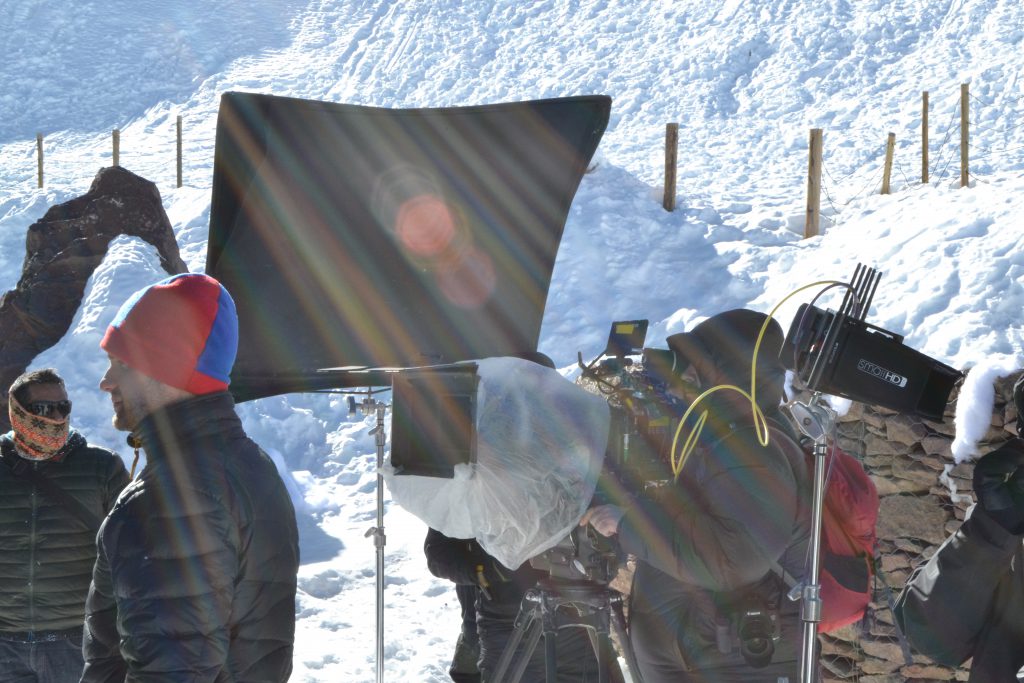 Above all, make sure to bring warm clothes and check the forecast periodically. We all know that the climate can be a decisive factor at the time of choosing one place over another for a shoot.
Above all, make sure to bring warm clothes and check the forecast periodically. We all know that the climate can be a decisive factor at the time of choosing one place over another for a shoot.
Santiago is one of the most cosmopolitan cities in South America. Still, don't be surprised to find some ski resorts as close as 45 kilometres away. You could leave your hotel and be hitting the snow in just one hour and 45 minutes. The road will take you right through the heart of the Andes, and if you are lucky and pay attention to the views, you might just be able to spot a condor on your way.
If you happen to be there at the peak of the season, one recommendation would be to either leave very early in the morning or even spend the night before your shoot at any of the hotels in the resorts. That way you will be avoiding the heavy traffic, typical of the winter vacation weeks. Make sure to check when these will take place, and try to work your schedule around them. This will make it easier to book accommodation, vehicles and vendors.
Access roads to the Santiago Resorts are paved and in excellent condition but in the event of snow, 4x4 vehicle support is highly recommended. Once at the resort, all of the basic needs can be sorted. There are good communications and first aid assistance in case of an emergency. If needed, helicopters are available to meet the different needs your production might face. Lifts, snowcats and skidoos are also available at these resorts, so make sure your productions service company includes those into the logistics. Just keep in mind that carrying all your gear up the mountain will take awhile, so allow extra time for that into your shooting schedule.
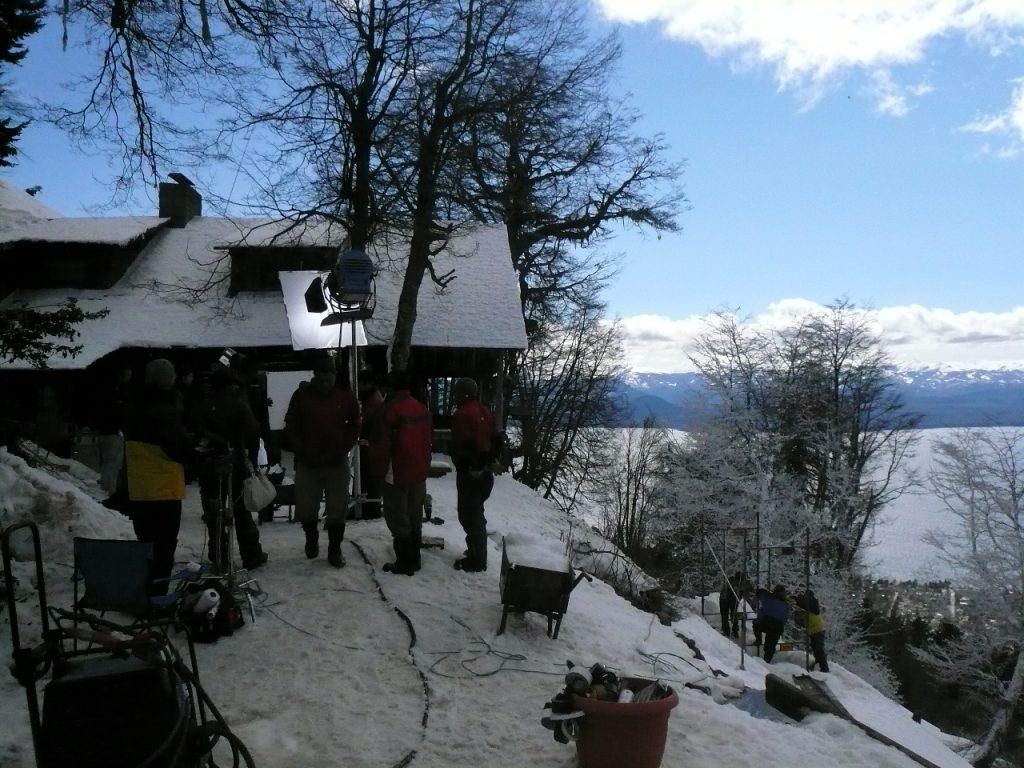 A little bit further away, going up north, you will find Portillo centre, next to the international border with Argentina. The estimated driving time to get there is about two hours. In some cases, arriving the day before your shoot is recommended, so that you can make the most of your day and not spend precious hours traveling. There are great facilities there, and an assortment of hotels, cabins and lodges to accommodate all of your crew.
A little bit further away, going up north, you will find Portillo centre, next to the international border with Argentina. The estimated driving time to get there is about two hours. In some cases, arriving the day before your shoot is recommended, so that you can make the most of your day and not spend precious hours traveling. There are great facilities there, and an assortment of hotels, cabins and lodges to accommodate all of your crew.
If you are looking for wild views, with no civilisation around, you can take a 30 minute helicopter ride from Santiago and reach the Andes Range, as it is known for unexplored landscapes. If this is what you are looking for though, make sure to allow for a proper preliminary scouting period to make sure all your needs are met. These types of locations are better suited for guerrilla style shoots.
South Chile
This area can be reached by land, and the first resort you will find on your way there is Chillán, about 550 kilometres away from Santiago, which equates to a six hour drive. If you don't feel like sitting in a van for that long, you can hire one of the many helicopter charters available.
Chillán is highly regarded for its hotels and hot springs but mostly its luscious woods. Since it's one of the most in-demand centres, securing accommodation for you and your crew is key. There are assorted options for the different needs, to meet some of the highest standards, as well as tight budgets.
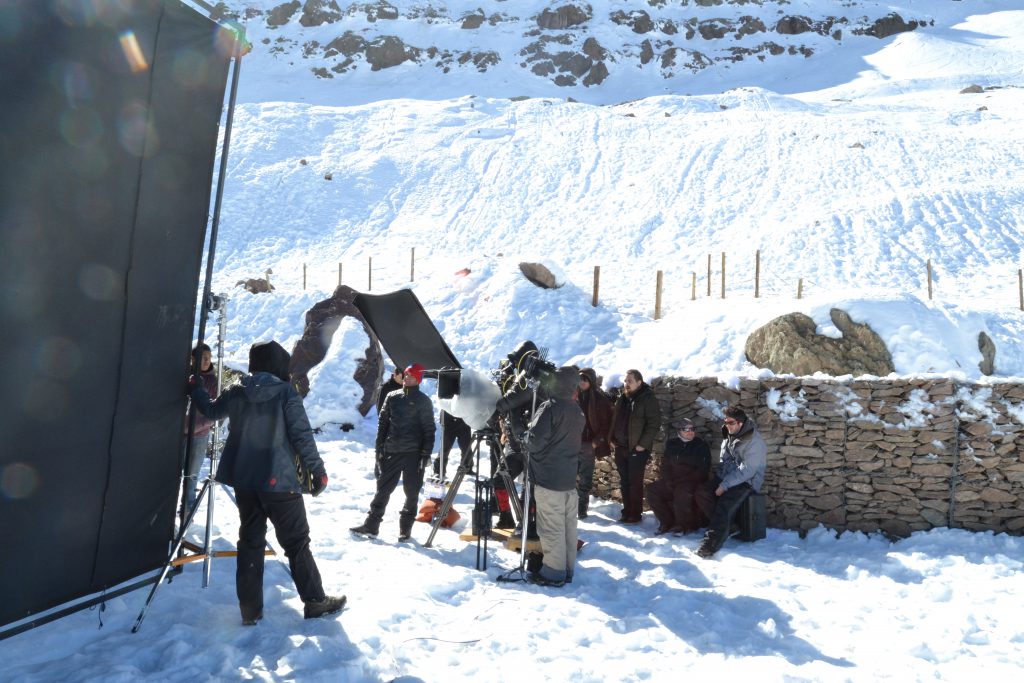 Logistics wise, 4x4 vehicles are highly recommended. Trucks will most probably need snow chains to get to the mountain, so if you want to move faster, make sure to have some 4x4s in your fleet. The resort also has available lifts, snowcats and skidoos. The town can meet your basic needs as well, but of course, arranging the logistics ahead of arrival will help you save time and money.
Logistics wise, 4x4 vehicles are highly recommended. Trucks will most probably need snow chains to get to the mountain, so if you want to move faster, make sure to have some 4x4s in your fleet. The resort also has available lifts, snowcats and skidoos. The town can meet your basic needs as well, but of course, arranging the logistics ahead of arrival will help you save time and money.
If you travel further south, you will find Corralco ski resort, near the Lonquimay volcano, about 800kms away from Santiago. To get there you can take a one hour, 20 minute flight to the city of Temuco and then drive for two hours and 30 minutes to the basetown of Malalcahuello, which is a 20 minute drive from the resort.
Snow covered woods, paths surrounded by the iconic Chilean tree, Araucaria and the wild hills of Las Raices make for spectacular locations. While the mountains present that wild feeling, the town of Malalcahuello is equipped to meet your basic needs. Great places to eat, primary assistance, banks and great hotels and lodges are within reach.
Most of the accesses consist of dirt roads and so 4x4 traction will most probably be necessary at some point in your production.
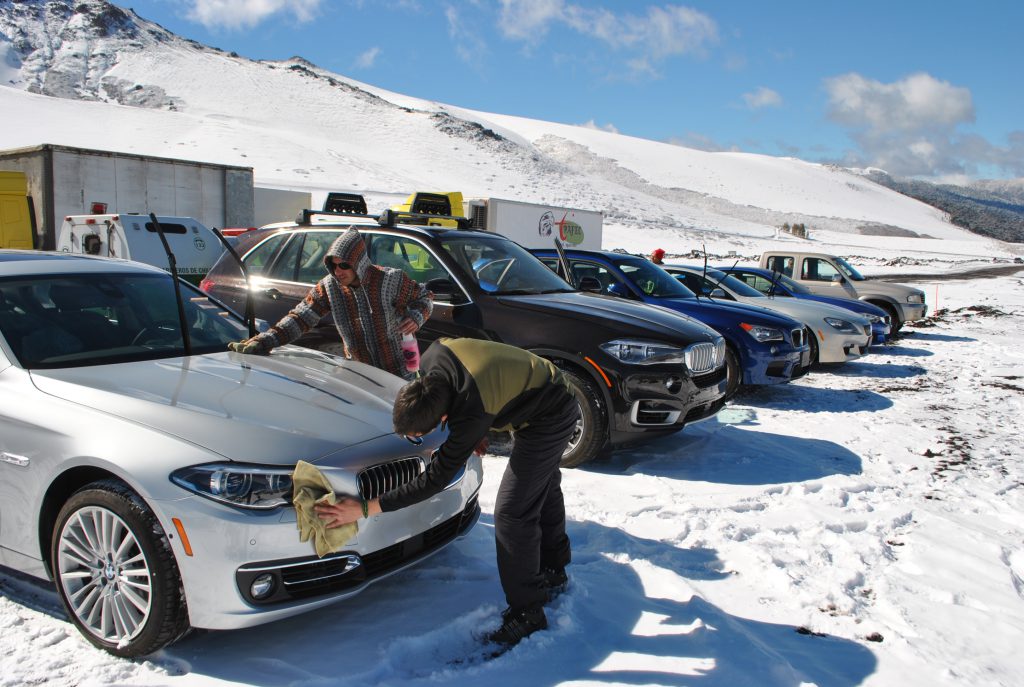 The resort has its own lift service and offers snowcats. There are also skidoos available, but you must reach out to local owners for rentals. If a helicopter is needed for your production, please keep in mind that you will need to ferry it from Santiago, which is about a three hour flight.
The resort has its own lift service and offers snowcats. There are also skidoos available, but you must reach out to local owners for rentals. If a helicopter is needed for your production, please keep in mind that you will need to ferry it from Santiago, which is about a three hour flight.
In this area, you can be met with heavy snowfalls and the temperature goes from -8C to 3C so make sure to pack a good supply of warm clothes.
Next in the list is Pucón, 800 kilometres away from Santiago, one of the most popular ski centres in Chile and a snowboarder's paradise. To get there, you need to fly to Temuco and then drive for about one hour and 40 minutes to the town of Pucón. This town has a lot to offer and could even surprise you for its ability to arrange some last minute production needs, and its proximity to the ski centre make logistics quite accessible. The resort has lifts, snowcats and skidoos as well, so you could consider Pucón one of the most production friendly destinations south of Santiago.
In this same area, you will find the National Reserve of Huilo Huilo. One of the main attractions here is the glacier in the Mocho Choshuenco volcano, which is covered in snow during the winter but in the summer, it reveals its eternal ice. This is basically the only place in Chile that can give you a winter look all year long and it's only an hour and 30 minutes away from Pucón.
Chilean Patagonia
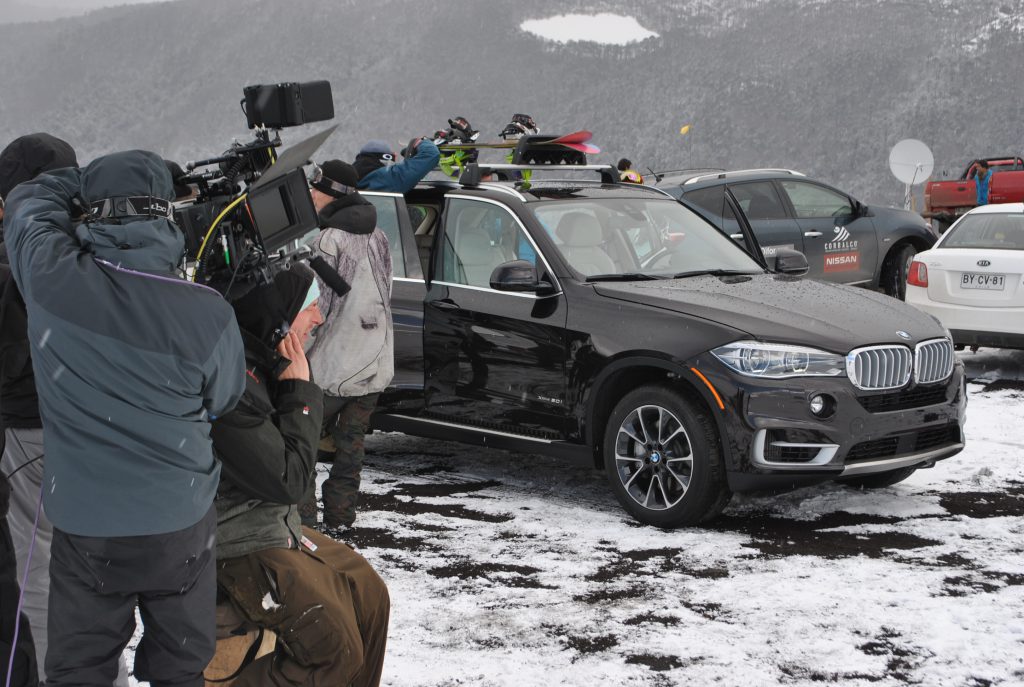 The city of Coyhaique, 1700 kilometres from Santiago, is always the beginning of your journey through the Chilean Patagonia. The city has become a film friendly destination in recent years thanks to local authorities, who try to make all processes a smooth ride for production companies. In terms of locations, Location Managers have called it a "diamond in the rough". Getting there means taking a two hour and 20 minute flight to Balmaceda Airport and then a 30 minute ride to town.
The city of Coyhaique, 1700 kilometres from Santiago, is always the beginning of your journey through the Chilean Patagonia. The city has become a film friendly destination in recent years thanks to local authorities, who try to make all processes a smooth ride for production companies. In terms of locations, Location Managers have called it a "diamond in the rough". Getting there means taking a two hour and 20 minute flight to Balmaceda Airport and then a 30 minute ride to town.
Unless you are part of a light shoot crew, where all the equipment can be sent on the plane (make sure to allow for any excess baggage costs), you will need to consider about five days for trucks to arrive there. There's even a part of the drive that involves going into Argentinean territory, so a customs process will be involved.
Once you’ve arrived in the city, you will find different options in accommodation and restaurants, coffee shops and stores. Here too, 4x4 vehicle support will be a standard requirement. In the resort, there are lifts and snowcats available for productions. If your shoot involves the use of a helicopter, depending on how the camera will be set, you will either need to ferry it from Santiago (eight hour flight) or Puerto Montt (three hour flight).
Finally, and to end our trip, we arrive at the southernmost city in Chile, Punta Arenas. Located 3020 kilometres away from Santiago, Punta Arenas is home to the Ski Mirador resort, one of the few in the world that overlook the ocean. To get to this remote paradise, a three hour and 25 minute flight from Santiago is needed and then a 25 minute drive to the centre of town.
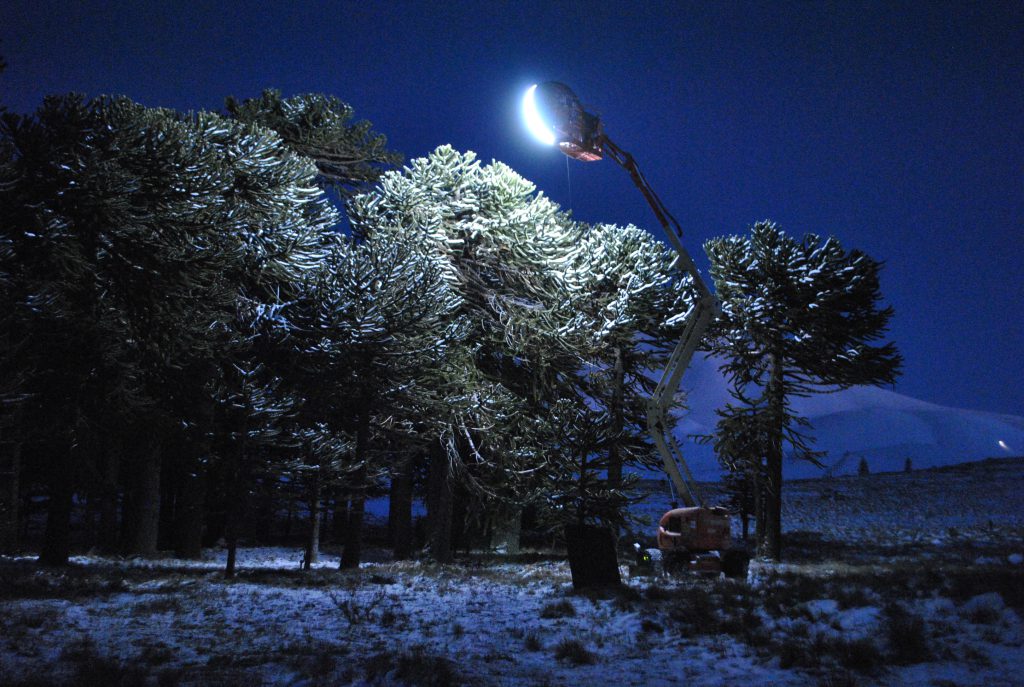 Trucks will need about a week to get here and the drive from some parts of the country will take you through Argentina.
Trucks will need about a week to get here and the drive from some parts of the country will take you through Argentina.
Punta Arenas is a city full of life and since it's also a port town, some expenses can be made tax free. In production terms, it's highly friendly, and the ski resort is equipped with lifts and snowcats to facilitate logistics. An important thing to keep in mind is that there are only about seven hours of daylight, so make the best of it!
Hopefully, the information provided here will make you curious about Chile and all it has to offer. Year after year the country is finding a stronger position among other production destinations. If you've already been then you’ll know about it's advantages such as great crew and equipment and close proximity from the capital city to the mountain and the sea. If you haven't, then now you have the excuse of a great winter location for your next production, so what are you waiting for?
This article was written by the team at Jacaranda Films, a production service company with 10 years' experience in helping countless productions to make the most of South America.
Related Posts
- Filming in Chile with Raimundo Alemparte of Film Commission Chile
- Liam Neeson’s The Grey braves sub-zero conditions on location in British Columbia
- Even Stranger on the Shore – The tale of a supermarket on a beach
- While its industry improves Chile grows as a production service platform, hand in hand with Shoot in Chile
- m ss ng p eces creates Urban-Knitter showcase in Santiago filming for 7Up Free
- Filming ultra-light on location in Chile and Peru and Bolivia
- 2AM climbs a mountain on location in Chile for Cadbury’s Wispa
- Filming in Chile with Location Manager Felix Hadad Rivas
Related posts:
Global Filming Incentive - Chile (see more…)
Comments
Not Logged in
You must be logged in to post a comment
There are 2 comments
Murray Ashton
| #
Hi Remi,
Great article! Highly informative and location / production educational. Look forward to more. Shooting the Atacama desert?
With every good wish,
Murray
Reply
Federico J. Palma
| #
Great article. Funny though, pic #2 is at Cerro Otto, Bariloche, Argentina!
Reply